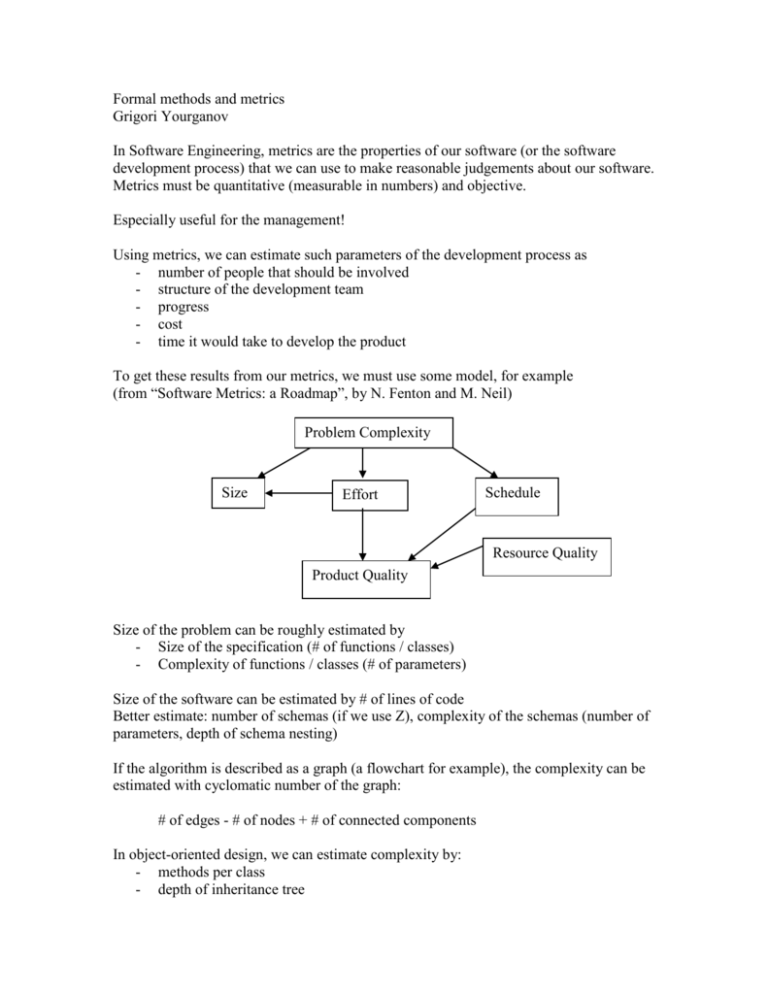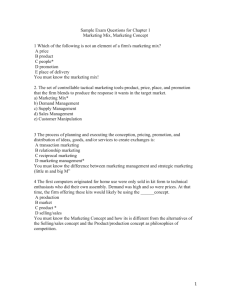Formal methods and metrics
advertisement

Formal methods and metrics Grigori Yourganov In Software Engineering, metrics are the properties of our software (or the software development process) that we can use to make reasonable judgements about our software. Metrics must be quantitative (measurable in numbers) and objective. Especially useful for the management! Using metrics, we can estimate such parameters of the development process as - number of people that should be involved - structure of the development team - progress - cost - time it would take to develop the product To get these results from our metrics, we must use some model, for example (from “Software Metrics: a Roadmap”, by N. Fenton and M. Neil) Problem Complexity Size Effort Schedule Resource Quality Product Quality Size of the problem can be roughly estimated by - Size of the specification (# of functions / classes) - Complexity of functions / classes (# of parameters) Size of the software can be estimated by # of lines of code Better estimate: number of schemas (if we use Z), complexity of the schemas (number of parameters, depth of schema nesting) If the algorithm is described as a graph (a flowchart for example), the complexity can be estimated with cyclomatic number of the graph: # of edges - # of nodes + # of connected components In object-oriented design, we can estimate complexity by: - methods per class - depth of inheritance tree - coupling between classes Halstead’s measure of the complexity of a module: n1 - # of unique operators n2 - # of unique operands N1 – total occurrence of the operators N2 – total occurrence of the operators Vocabulary size: n = n1 + n2 Length of the module: N = N1 + N2 Then, effort to generate this module can be approximated by n1 * N2 * N log N / 2 n2











